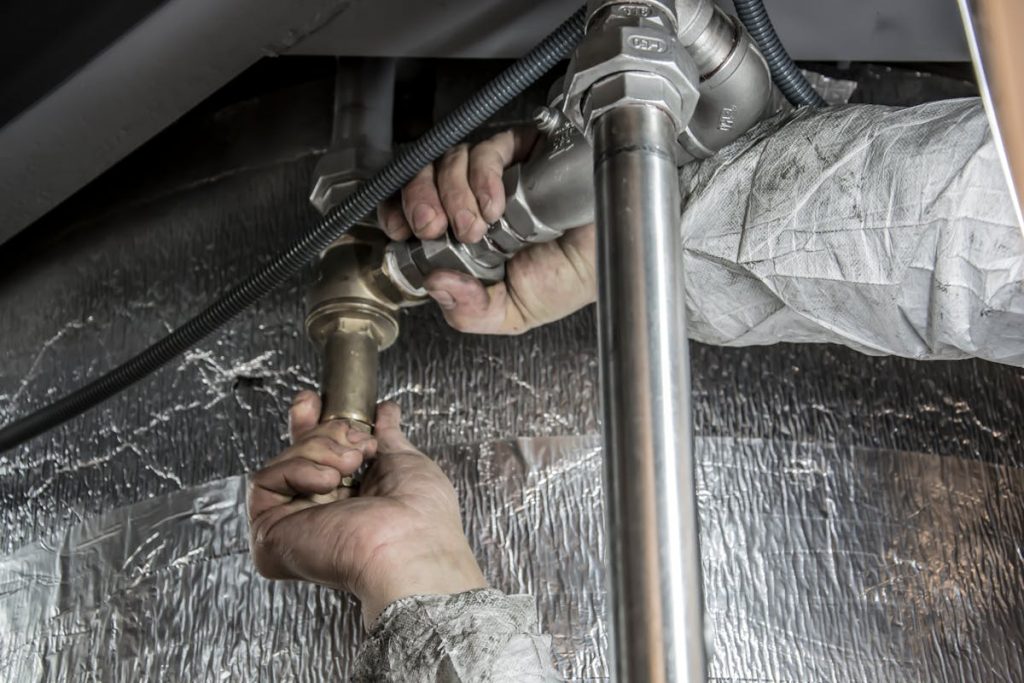
- Older homes possess unique plumbing challenges, including aging pipes and outdated system components.
- Clogged drains can be prevented by mindful disposal and addressed with simple remedies or professional assistance.
- DIY plumbing has limits; professional expertise is crucial for complex issues in vintage homes.
- Regular maintenance and proactive measures ensure the longevity and comfort of historic properties.
Owning an older home can be a dream full of charm and character, but it often comes with unique challenges not typically found in more modern setups. One of the most common concerns for owners of vintage properties is the state of their plumbing systems. Understanding the intricacies of plumbing in older homes and knowing how to detect and address issues can make a significant difference in the comfort and safety of your living space. This comprehensive guide will explore the common plumbing problems you might encounter and how to deal with them effectively.
Understanding the Plumbing System of Older Homes
Older homes, brimming with architectural history, boast plumbing that reflects the craftsmanship of bygone eras. However, these systems entail a complexity that might puzzle the uninitiated. The unique setup of these plumbing networks, often composed of different materials and following different standards than those used today, requires a tailored understanding and approach.
The Materials Used
Craftsmanship and durability were key goals in the construction of older homes. The primary materials used, such as cast iron, galvanized steel, and even lead for piping, were selected for their longevity. However, time can wear these down, leading to rust, corrosion, and scaling that eventually necessitate replacement or significant repair.
Common Plumbing Layouts
The arrangement of plumbing systems in older homes was often a product of necessity and utility. Straight runs of pipes, lack of cleanouts, and sometimes peculiar placements can complicate maintenance and repairs. Understanding these layouts can provide insight into potential issues that may arise.
The Importance of Regular Maintenance
Preventive maintenance is your best friend for keeping the plumbing in an older home functioning smoothly. This isn’t just about avoiding hefty repair bills; it’s also about preserving the building’s integrity and your peace of mind.
Schedules for regular checks should be established, and awareness of early warning signs of plumbing issues is crucial. Prevention includes simple tasks such as checking fixture connections, cleaning drains, and periodically inspecting exposed pipes and the sump pump. Catching problems early can save you money and prevent serious water damage.
Key Plumbing Problems and Solutions
Older homes often manifest a unique amalgam of plumbing problems that require different strategies for resolution.
Leaky Pipes and How to Address Them
Leaks are a persistent issue with aging plumbing. Identifying the source of a leak is the first challenge, often requiring a professional to trace its origin without causing unnecessary damage to your home. Once located, decision-making occurs around whether the pipe can be effectively repaired or should be replaced.
Managing Low Water Pressure
Low water pressure can result from various issues, including deteriorating pipes, clogs, or outdated systems not designed to handle contemporary water demands. Addressing this issue involves careful diagnosis to determine the root cause, which may entail cleaning the aerator and more extensive repiping.
Efficiently Handling Sewer Line Troubles
Issues within the sewer line can lead to some of a home’s most inconvenient and unsanitary problems. Identifying an issue with the sewer requires understanding the typical signs — such as gurgling noises, persistent clogging, and foul odors — and swift action to prevent further property damage.
Maintaining the Water Heater
The water heater in an older home warrants special attention, potentially serving far beyond the manufacturer’s recommended lifespan. Signs of a faltering water heater include inconsistent water temperatures, strange noises, and visible leaks. Regular maintenance, including flushing the tank to remove sediment, can extend its life and ensure a reliable hot water supply.
Water Heater Repair and Its Importance
Proper water heater repair needs to be urgently addressed, as neglect can lead to flooding and compromised safety. Hiring a professional for repair can offer peace of mind and ensure the longevity of this crucial component of your home’s plumbing system.
Clogged Drains: Prevention and Cure
Clogs in older homes can be particularly stubborn due to decades’ worth of debris in the pipes. Preventing clogs involves being mindful of what goes down your drains and addressing slow drainage promptly. For existing clogs, simple home remedies or the help of a plumber’s snake may do the trick, but in severe cases, professional hydro-jetting might be necessary.
DIY vs. Professional Help

Taking a do-it-yourself approach to plumbing problems in an older home can be tempting, but it’s important to recognize your limitations. While minor issues like a leaky faucet might be within your ability to fix, larger scope problems require the expertise of a professional. Calling in a plumber with experience working on older homes can be the difference between a successful repair and a mishap that leads to further damage.
Conclusion
Owning an older home is a commitment to history and craftsmanship. By understanding the unique plumbing challenges that come with these properties, maintaining them regularly, and knowing when to seek professional help, you can ensure that your vintage abode remains a comfortable, functioning space for years to come. Being proactive about plumbing issues preserves your home’s value and the simple joys of owning a piece of architectural heritage.
